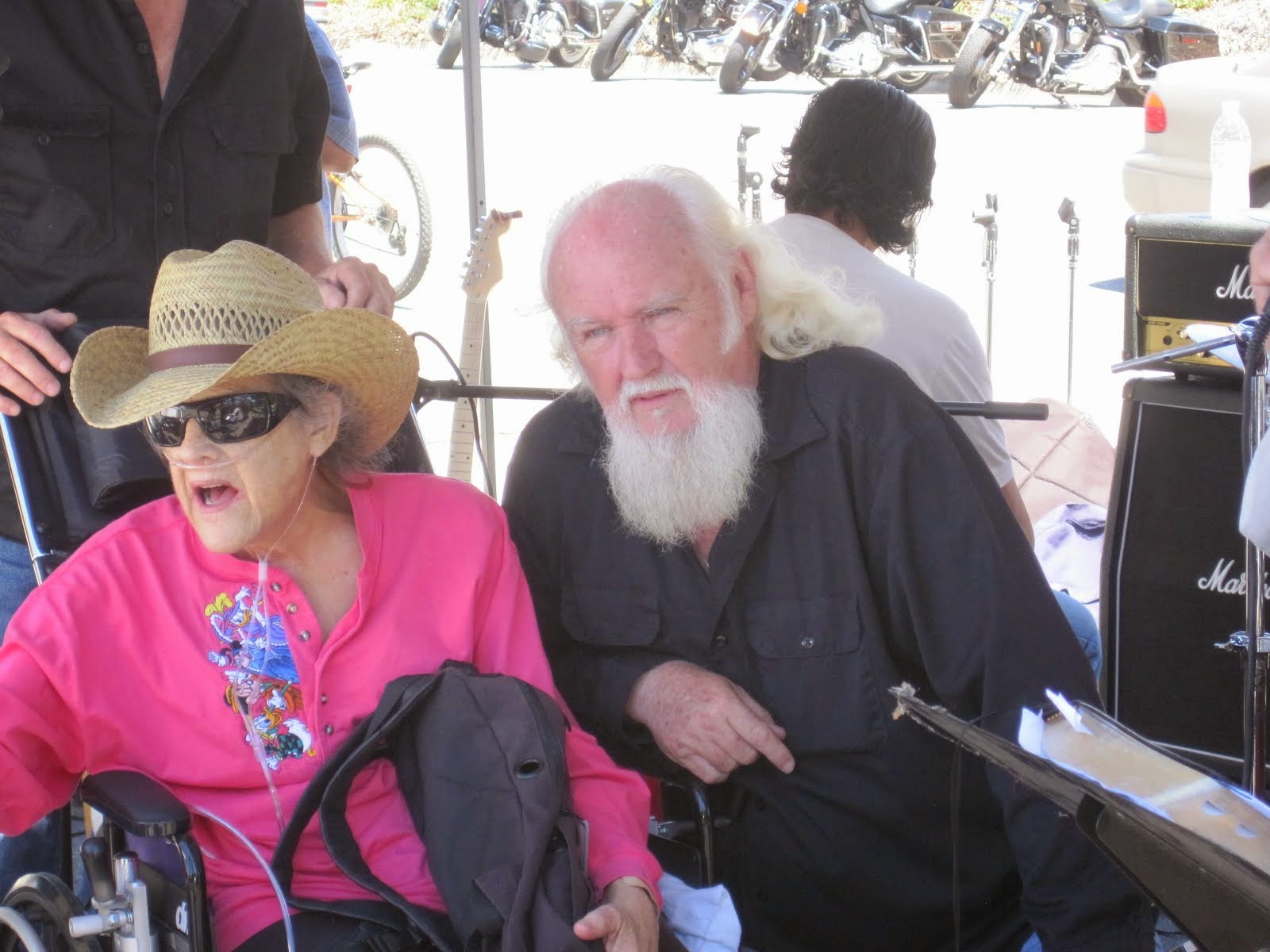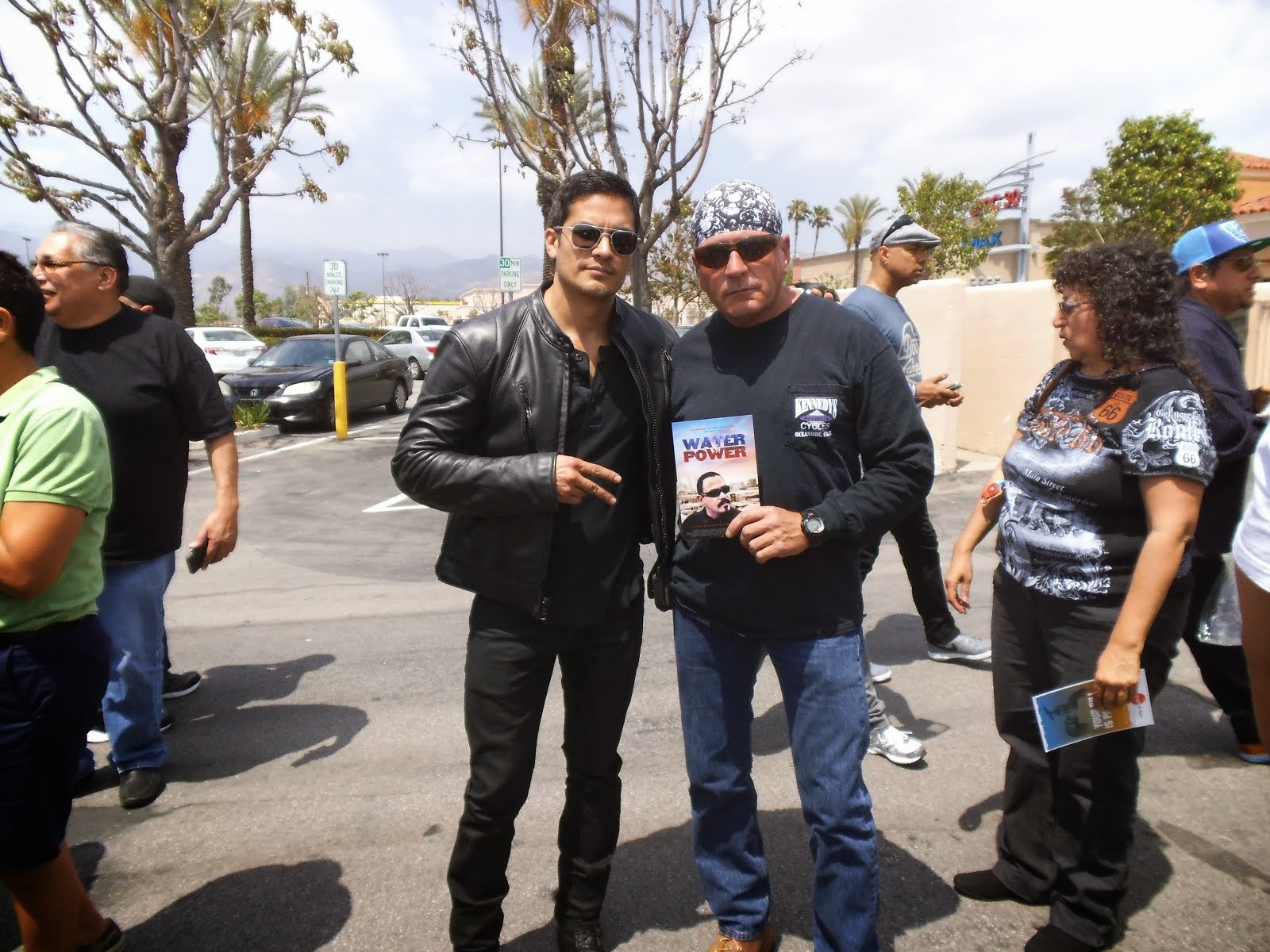OFF THE WIRE
Momentum is building to legalize lane splitting outside California. The practice of riding between lanes of stopped or slow moving cars is legal in most of the world but not in most of America.
Something called “lane sharing” has always been legal in California. It allowed two motor vehicles to share the same lane. It also allowed bullying cops to cite motorcyclists for things like driving on the white line or stopping at a light with your tires in one lane and your left foot in another.
The California Highway Patrol put a stop to the madness about two years ago when they issued an official bulletin titled “Lane Splitting General Guidelines.” The document explained to California bikers when they would and wouldn’t get a ticket for splitting lanes. Then the CHP backed down when a long time state employee named Kenneth Mandler “petitioned the California Office of Administrative Law in 2013, claiming the CHP created an ‘underground regulation’ by formulating and distributing guidelines for safe lane splitting.” Whether Mandler likes it or not, the underground regulation has stuck. In California, at least, everybody now seems to be on the same page about what is legal and what is not.
Other States
Now legislation has been proposed in four other states, Washington, Oregon, Texas and Tennessee that would legalize lane splitting there. The legislation in all four states has been supported and endorsed by the American Motorcyclist Association.
Three days ago the Wall Street Journal ran a feature that reports that. “some traffic-safety officials – and many automobile drivers – see the practice as unsafe.” The Journal also cites research that indicates that “lane splitting, when done in a safe and prudent manner, is no more dangerous than regular motorcycling,” The paper reports that legislation in California may be forthcoming that would formally allow lane splitting when the speed differential is less than ten miles an hour in traffic moving at less than 30 miles an hour.
Washington And Oregon
The legislation to legalize lane splitting in Washington is Senate Bill 5623. It would allow motorcyclists to pass a car in the same lane when traffic is stopped or is moving at 25 miles an hour or less. If you split under the proposed law, you can’t legally go more than ten miles an hour than the flow of traffic. The bi-partisan Washington bill is sponsored by Democrats Tim Sheldon and Steve Conway and Republicans Jan Angel, Mark Miliscia, Randy Becker and Judy Warnick.
There are two bills to legalize lane splitting In Oregon. Senate Bill 172, introduced by Brian Boquist, would permit riders to pass in a lane with traffic if traffic is stopped or has slowed to less than ten miles an hour and the lane-splitting rider is traveling at a speed of 20 miles an hour or less. Senate Bill 420, introduced by Jeff Kruse, would allow lane splitting if traffic is stopped or slowed to 25 miles an hour or less and the motorcycle operator is traveling at 35 miles an hour or slower.
Texas And Tennessee
There are also two bills in Texas. House Bill 813, introduced by Sergio Muñoz, Jr. would allow motorcycle riders to ride between lanes of traffic moving in the same direction, if traffic is traveling 20 miles an hour or slower, and if the motorcyclist is not traveling more than five miles an hour faster than other traffic. Lane splitting would be prohibited in school zones and in areas where the posted speed limit is 20 miles an hour or less. And riders and passengers must wear helmets. A similar bill, Senate Bill 442, introduced by Kirk Watson, omits the helmet provision, but restricts lane splitting to limited-access or controlled-access highways.
Tennessee House Bill 1102, introduced by Timothy Hill, would permit lane splitting when traffic is traveling at 45 miles an hour or less and the motorcyclist does not exceed posted speed limits. Lane splitting would not be permitted in marked school zones when a warning flasher or flashers are in operation.
skip to main |
skip to sidebar




Bill & Annie

Art Hall & Rusty


NUFF SAID.......


































































OOHRAH

ONCE A MARINE,ALWAYS A MARINE

GIVING BACK


MOUNT SOLEDAD














BIKINI BIKE WASH AT SWEETWATER










FRIENDS





BILL,WILLIE G, PHILIP










GOOD FRIENDS


hanging out

brothers


GOOD FRIENDS

Good Friends

Hanging Out




Bill & Annie
Art Hall & Rusty
Art Hall & Rusty


NUFF SAID.......



















NUFF SAID......



























Mount Soledad




BALBOA NAVAL HOSPITAL
RUSTY DANNY

ANNIE KO PHILIP

PHILIP & ANNIE

OUT & ABOUT

OOHRAH...

OOHRAH
ONCE A MARINE,ALWAYS A MARINE

ONCE A MARINE,ALWAYS A MARINE
American Soldier Network GIVING BACK

GIVING BACK
CATHY & BILL
PHILIP & DANNY & BILL

MOUNT SOLEDAD
bills today
EMILIO & PHILIP
WATER & POWER
WATER & POWER
bootride2013



BIKINI BIKE WASH AT SWEETWATER







ILLUSION OPEN HOUSE

FRIENDS


GOOD FRIENDS



BILL,WILLIE G, PHILIP









GOOD FRIENDS

GOOD FRIENDS
Friends
- http://www.ehlinelaw.com/losangeles-motorcycleaccidentattorneys/
- Scotty westcoast-tbars.com
- Ashby C. Sorensen
- americansoldiernetwork.org
- blogtalkradio.com/hermis-live
- davidlabrava.com
- emiliorivera.com/
- http://kandymankustompaint.com
- http://pipelinept.com/
- http://womenmotorcyclist.com
- http://www.ehlinelaw.com
- https://ammo.com/
- SAN DIEGO CUSTOMS
- www.biggshd.com
- www.bighousecrew.net
- www.bikersinformationguide.com
- www.boltofca.org
- www.boltusa.org
- www.espinozasleather.com
- www.illusionmotorcycles.com
- www.kennedyscollateral.com
- www.kennedyscustomcycles.com
- www.listerinsurance.com
- www.sweetwaterharley.com

Hanging out

hanging out
Good Friends

brothers
GOOD FRIENDS

EMILIO & SCREWDRIVER

GOOD FRIENDS
Danny Trejo & Screwdriver

Good Friends
Navigation
Welcome to Bikers of America, Know Your Rights!
“THE BIKERS OF AMERICA, THE PHIL and BILL SHOW”,
A HARDCORE BIKER RIGHTS SHOW THAT HITS LIKE A BORED AND STROKED BIG TWIN!
ON LIVE TUESDAY'S & THURDAY'S AT 6 PM P.S.T.
9 PM E.S.T.
CATCH LIVE AND ARCHIVED SHOWS
FREE OF CHARGE AT...
BlogTalkRadio.com/BikersOfAmerica.
Two ways to listen on Tuesday & Thursday
1. Call in number - (347) 826-7753 ...
Listen live right from your phone!
2. Stream us live on your computer: http://www.blogtalkradio.com/bikersofamerica.
A HARDCORE BIKER RIGHTS SHOW THAT HITS LIKE A BORED AND STROKED BIG TWIN!
ON LIVE TUESDAY'S & THURDAY'S AT 6 PM P.S.T.
9 PM E.S.T.
CATCH LIVE AND ARCHIVED SHOWS
FREE OF CHARGE AT...
BlogTalkRadio.com/BikersOfAmerica.
Two ways to listen on Tuesday & Thursday
1. Call in number - (347) 826-7753 ...
Listen live right from your phone!
2. Stream us live on your computer: http://www.blogtalkradio.com/bikersofamerica.
Good Times
Hanging Out

Key Words
- about (3)
- contact (1)
- TENNESSEE AND THUNDER ON THE MOUNTAIN (1)
- thinking (1)
- upcoming shows (2)
Blog Archive
-
▼
2015
(1351)
-
▼
April
(123)
- WHAT TO DO?????????????
- Tyranny by any other name......
- BABE OF THE DAY
- “THE BIKERS OF AMERICA (THE PHIL and BILL SHOW)” 0...
- USA - Stingray Tracking Devices: Who's Got Them?
- Australia - To attach a bill of rights to our cons...
- USA - Martial Law in Boston and Gun confiscation i...
- CALIFORNIA - DUI checkpoint in Poway Friday evening
- USA - House Steps Closer to Overhauling Retirement
- BABE OF THE DAY
- Former Prosecutor Teaches You How to Protect Your ...
- AUSTRALIA - Motorcycle lane splitting: Better for ...
- (USA) YOU HAVE A FEDERAL RIGHT TO FILM COPS
- Illinois just quietly passed a law that makes it a...
- USA - Are Veterans Losing Gun Rights?
- BABE OF THE DAY
- When most Americans look back on the birth of Free...
- USA - Cop Turned Lawmaker Just Proposed Making the...
- BABE OF THE DAY
- Legislation that Fines Cops $15,000 for Interferin...
- OFF THE WIRE Wayne Peal, Livingston Daily ...
- When enough Americans realize the systemic police ...
- MILF OF THE DAY
- BABE OF THE DAY
- BABE OF THE DAY
- USA - MILITARY APPRECIATION MONTH
- The VA Is Placing Veterans On An Illegal Federal G...
- CA - Former inmate Rusty Coone's life is epitome o...
- BABE OF THE DAY
- Biker Allies in Congress Want to Slam Brakes on He...
- BABE OF THE DAY
- 11th Annual Poker Run Motorcycle and Hot Rod Rally...
- The Motorcycle Wave Handbook
- BABE OF THE DAY
- USA - (MOUT) Military Operations on Urban Terrain
- Edmundson, MO - Leaked Document From Mayor to Poli...
- BABE OF THE DAY
- Daily Mail: More than 2 Million of Hillary's Twitt...
- GOVERMENT ADMITS ABOUT SMOKING POT
- BABE OF THE DAY
- USA - Feds Preparing to Invade Texas, List State a...
- BABE OF THE DAY
- BABE OF THE DAY
- WARWICK, R.I - MOTEL 6 WILL DO MORE THAN LEAVE THE...
- COLORADO - FreedomFestival for our American Soldie...
- Texas Bill Would Make Recording Police Illegal
- Breaking: Congress Passes Bill Giving Police Unlim...
- Woman Sentenced After Hitting And Killing Grayling...
- AUSTRALIA - Anti-bikie law prosecutions set to con...
- Breaking: Congress Passes Bill Giving Police Unlim...
- BABE OF THE DAY
- Open House at illusion cycles Shop THIS SUNDAY APR...
- Missouri House approves ending motorcycle helmet r...
- Marine Walking Across America to Raise Money for W...
- BABES OF THE DAY
- PLEASE remind these people during the primaries ho...
- CHICAGO POLICE REFUSE TO RELEASE COVERT SURVEILLAN...
- California Fines Suzuki – Tells Motorcycle Owners ...
- BABES OF THE DAY
- Justice Prevails in New Mexico! Gov. Signs Bill Ab...
- USA - Congressmen demand DOJ immediately stop pros...
- BABE OF THE DAY
- Water & Power and Richard Montoya
- How many laws have actually SOLVED a problem?
- USA - Legalizing Lane Splitting
- BABE OF THE DAY
- USA - Liability May Follow Those Who Text Drivers
- CA - Lost Highway - Motorcycle Show & Concert
- DES MOINES REGISTER SUGGESTS IOWA ASSET FORFEITURE...
- Two House Bills Would Completely Legalize Marijuan...
- BABE OF THE DAY
- CALIFORNIA - Rolling Deep 4 Charities
- Feel free to share - Hells Angels MC Cave Creek
- Federal Police and Watervliet Police Lie About Legal
- CA - With the passage of Proposition 47
- ** California Riders ** Summary of SB51 in Assembl...
- USA - Communications Assistance for Law Enforcemen...
- BABE OF THE DAY
- USA - **Fake** FBI Admits All Bikers Are On Gang L...
- Missouri House OKs lifting motorcycle helmet requi...
- New “Crowd-Control” Drones Will Shoot Protesters W...
- USA - Asset Forfeiture is a Violation of Most Basi...
- USA - Open Internet - Maintaining a Fast, Fair, an...
- BABE OF THE DAY
- Don't forget that under the NDAA, no proof is need...
- USA - 8 Things You Wouldn’t Think Are Spying On Y...
- USA - Government Trying To Establish New Regulati...
- MARYLAND - CHECK IT OUT
- Bikers of America, The Phil and Bill Show Online R...
- AB 51 is coming to vote April 6 in the Assembly Tr...
- USA - DHS Revives Effort To Monitor Americans With...
- SPREAD THE MESSAGE. EDUCATION IS KEY! TobaccoFreeCA
- BABE OF THE DAY
- BABE OF THE DAY
- Babe of the Week.....Perfect way to start the week !
- USA - The New Breadwinner; or, Income Redistributi...
- Michigan State Police announce giveaway of 9,000 h...
- Obama Signs Onto 20% Military Retirement Pay Cut
- USA - Are you ready for the real thing?
- USA - April is “Check Your Helmet” Month.
-
▼
April
(123)
Bikers of America, Know Your Rights!... Brought to you by Phil and Bill
Philip, a.k.a Screwdriver, is a proud member of Bikers of Lesser Tolerance, and the Left Coast Rep
of B.A.D (Bikers Against Discrimination) along with Bill is a biker rights activist and also a B.A.D Rep, as well, owner of Kennedy's Custom Cycles
